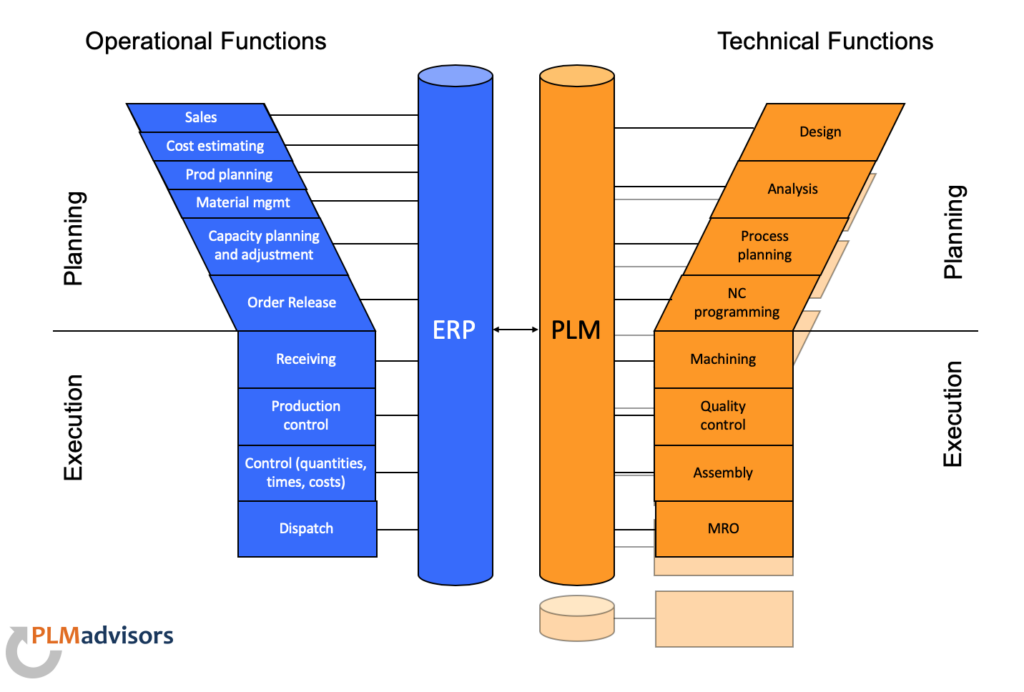Yesterday’s announcement of a partnership between two global software powerhouses to offer their customers integrated and enhanced solutions for product lifecycle management (PLM), supply chain, service and asset management can be seen as a first step towards a truly integrated product development and manufacturing environment, but also as an acknowledgement by these companies that both ERP and PLM and a tight integration between them are essential to help companies achieve their objectives of driving innovation, shortening time to market, increasing operational efficiencies, reducing costs, and improving quality.
And make no mistake, this partnership is market driven, meaning some large and powerful customers of SAP and Siemens were pushing for a more integrated solution between SAP’s ERP and Siemens’ PLM tools, likely recognizing that improvements in the operational process chain have limited impact if they are not matched by equal improvements in the technical process chain and vice versa (see graphic below, courtesy PLMadvisors).


Now, the vision and need of creating tightly integrated product development and manufacturing environments has been around for decades, and individual attempts to realize this have certainly been made on numerous occasions with varying success. Many manufacturers have attempted to integrate their ERP and PLM systems, and some have certainly succeeded in implementing solutions that allow passing master data, BOMs and documents from one system to the other or possibly even in both directions. But most of these integrations are one-offs, are a challenge and require significant effort and costs to design, implement and maintain.
And even large enterprise software companies have tried to provide more integrated solutions. About 10 years ago Oracle acquired the PLM company Agile and promised to integrate their ERP suite with the PLM capabilities of Agile. And SAP themselves have been offering a PLM solution now for many years that was promised to be comprehensive and integrated with their ERP capabilities.
But as so often, the devil is in the execution. Oracle meanwhile quietly abandoned the effort of integrating Agile in favor of creating a new, cloud-based solution that includes both ERP and PLM capabilities, and SAP’s PLM solution never really gained larger acceptance, adoption and market share, not even in their own ERP customer base largely because the functionality offered by their PLM solution never matched the ones of the PLM pure plays, such as Siemens, Dassault and PTC.
So the announcement of the SAP – Siemens partnership is certainly promising, as two leaders in their respective areas join forces to hopefully address an important and urgent market need: To offer a commercially available solution that brings two of the major ERP and PLM systems together and allows their customers to create a tightly integrated product development and manufacturing environment.
It remains to be seen if this will be just an exclusive solution for a few of their largest and most powerful customers or if this will in fact become available as a commercial and affordable offering for their entire customer base, helping even smaller companies to realize a low-effort and cost-effective integration between their PLM and ERP worlds.

